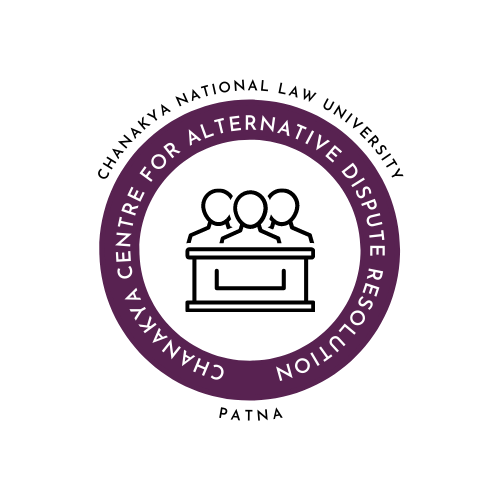Chanakya Centre for Alternative Dispute Resolution (CCADR) invites original and unpublished submissions from academicians, legal practitioners, research scholars, and students, encouraging authors to submit thought-provoking, well-researched pieces that advance the discourse on alternative dispute resolution. We welcome guest contributions exploring any aspect of Alternative Dispute Resolution and related legal developments.
General Guidelines
- Only unpublished and original manuscripts are invited for publication at the Chanakya Centre for Alternative Dispute Resolution [“CCADR”] Blog.
- All submissions should be in .doc or .docx format. The manuscripts must be submitted using our submission form HERE.
- Co-authorship of a maximum of 2 authors is allowed.
- Submissions should preferably be within 1200 – 1500 words. However, submissions exceeding 1500 words shall be published depending upon the content and the relevance of the manuscript, and upon the discretion of the Review Board.
- The manuscript should contain a title, in not more than 10 words.
- Each submission must include up to three keywords relevant to the theme of the article.
- For referencing, we prefer hyperlinks over footnotes and endnotes. Endnotes (if at all to be used) should be used over hyperlinks at a minimal level.
- Similarity limit should not exceed 15%, with the AI limit not exceeding 30%.
- We accept submissions on a rolling basis. We follow a peer-review system by our Blog Editors to review the submissions. Contributors must work with the Editors to incorporate suggested revisions and comments.
- Upon acceptance, the manuscripts may be returned to the author(s) with suggestions regarding the substance and/or style to be incorporated by the author(s). Manuscripts incorporating suggestions shall be accepted for publication which shall be contingent upon the final decision of the Review Board.
- Authors must include their brief biographical information (in no more than two lines) at the top of the post below the title. See, e.g.: “Mr. Y is a partner at EFG Law Firm in New Delhi”, or “Mr. Z is a 4th year B.A., LL.B. (Hons.) student at STU Law University/College in New Delhi”.
- Analytical posts are preferred over descriptive ones. Posts will be considered for publication based on various factors including relevance, quality, structure, logic and writing-style.
- Submissions not conforming to the guidelines mentioned above shall be subject to rejection.
- CCADR reserves the right to reject/accept any article. Further, by sending your article to CCADR, you agree that we may publish it on the CCADR Blog. Decisions of the Review Board are binding and submissions may be rejected solely at the discretion of the Review Board. Given the large volume of submissions, the Editors may not in a position to provide feedback on each rejected submission.
Formatting Guidelines
Font – Times New Roman, Font Size – 12, Line spacing – 1.5, Alignment – Justified, Paragraph Spacing – 6 pt (before and after).
Copyright
- The copyright over the manuscripts vest with the CCADR, however, all the moral rights vest with the author. At no time will CCADR use the submission for commercial use without notice to the author(s) or without attributing to them.
- We do not cross-post from other websites. Cross-posting to another website (if any) can be done subject to the express permission of the Review Board of CCADR. Additionally, at all stages of the review, the CCADR Review Board reserves the right to amend or waive any of the guidelines noted here, along with the right to reject or revoke publication..
Submission Process
- Manuscripts should be submitted through the Form attached above.
- Submissions made other than the aforementioned shall lead to rejection.
- Any correspondence and queries regarding the submission need to be made at ccadr@cnlu.ac.in.
**As updated on 19th September, 2025
